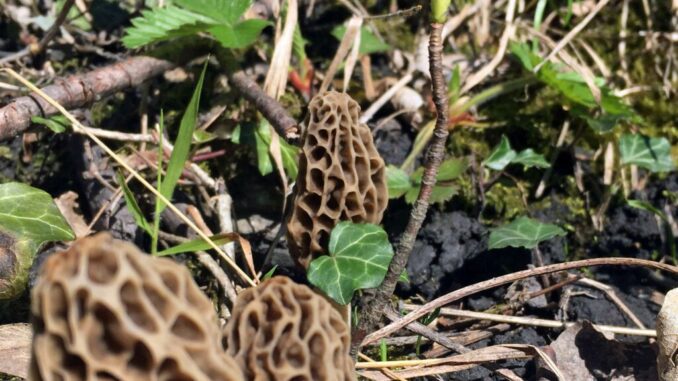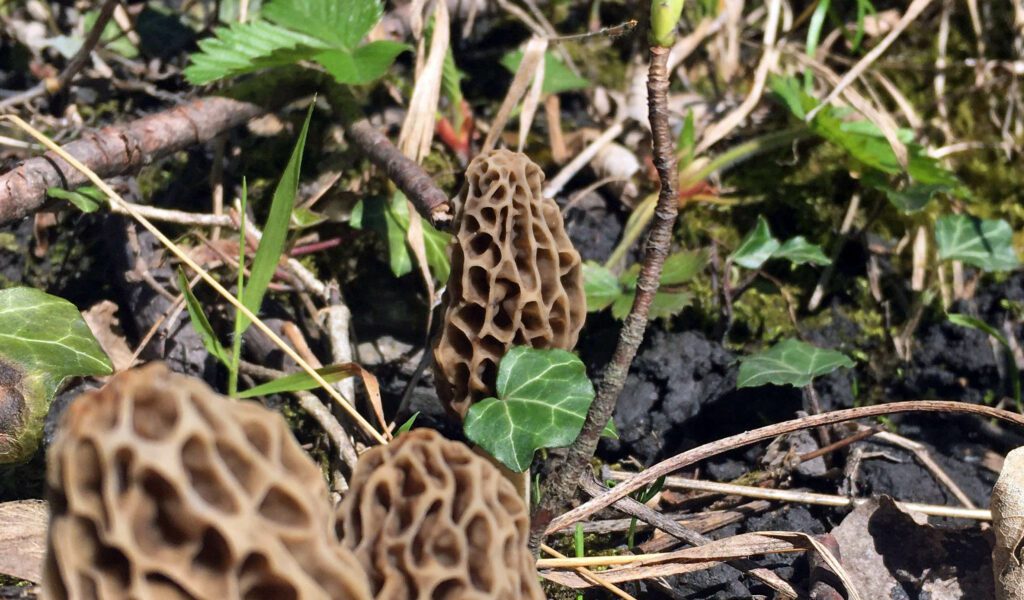
What is the best soil for morel mushrooms? What kind of soil do morels like?
Read this post!

Reminder On The Morel Habitat
Before moving on to the perfect soil for morels, it is important to make a reminder about the favorable habitat for morels. Indeed, if the soil is an important element to find morels, this one is not enough. It is also necessary to take an interest in other elements of the morel environment: the host trees, its growth period, its elevation, etc.
To broaden your knowledge a little, you can explore our Morel Mushroom Maps or you can read our main article on where to find morels.
What Type Of Soil Do Morels Grow In?
Sandy To Loamy Soils
First of all, you should know that the morel prefers well-drained soils, which allow water to circulate freely. Avoid soils that are too clayey which, on the contrary, retain water and are not very permeable. However, extremes should be avoided: loamy soil is better than sandy sand.
What is the difference between sandy and loamy soil? Sandy soil is mainly made up of sand and therefore of fairly coarse particles. These soils tend to filter water very well, but also leach out very quickly, which is not very good for nutrient conservation. On the contrary, loamy soil is the right compromise between clay soil and sandy soil: it drains well while retaining nutrients.
To summarize: sandy soil is the opposite of clay soil. And loamy soil is an interesting intermediate between these two types of soil.
How To Identify These Soils In The Field?
- Take a handful of soil in your hand.
- Try forming a smooth ball:
- if the ball is very smooth, compact, holds well, then you are more on clay soil.
- if the ball crumbles a little, has trouble standing, then you are more on loamy soil.
- if you cannot form a ball at all because the soil is too friable, then your soil is rather sandy.
Of course, our approach is very simplistic, but it allows you to understand the logic behind this soil qualification.
And Must Be Limestone!
Calcareous elements are important elements for finding morels. Indeed, the calcareous elements, when they are well diffused in the soil, increase the pH of this one. And you probably know it, but the morel grows on neutral to basic soils. This is the point we are going to address now.
The Optimal Soil PH For Morels
pH Value: Acidic Or Alkaline Soil?
You will tell us “no one walks around with a pH meter during a walk”. Well, we do! But don’t worry, it’s not a prerequisite for estimating soil pH.
Moreover, knowing the precise value of the pH of a soil is not really of interest, what you must remember is that the pH of your soil must not be too low. If it is equal to or greater than 6, it is reasonable. This corresponds to a slightly acidic to basic soil.
Concretely, How To Identify The Right PH?
To ensure the soil pH is high enough for morels, use the vegetation around you. In general, calcareous vegetation and acidophilic vegetation are used.
Acidophilic vegetation is used to find out if the soil is too acidic. If, for example, you come across a lot of ferns or heather then you are on acid soil and there is no point in persisting on this type of soil. On the other hand, if you come across acidophilic plants in very small quantities, then this is not a bad sign, quite the contrary. This can mean that the plant is present, but that the conditions are too bad for it to flourish there: a sign of non-acidic, therefore calcareous soil…
The Right Soil Temperature For Morels
Morels prefer cool environments with relatively good exposure. The key factor for fruiting is the well-known thermal shock, an alternating pattern of hot and cold temperatures. Specifically, an alternation between 41 °F at night and 59 to 68 °F during the day is ideal for initiating morel fruiting, although slight variations in temperature can still support their growth.
Determining the exact time it takes for morels to grow is not straightforward. Allowing 7-10 days after fruiting seems reasonable to yield a well-developed sporophore.
Discover Our Morel Mushroom Maps!
The soil is not the only element to take into account, there are also trees, elevation, slope… All these elements are grouped together on our Morel Mushroom Maps and allow you to know very quickly where the best morel spots are.
Leave a Reply